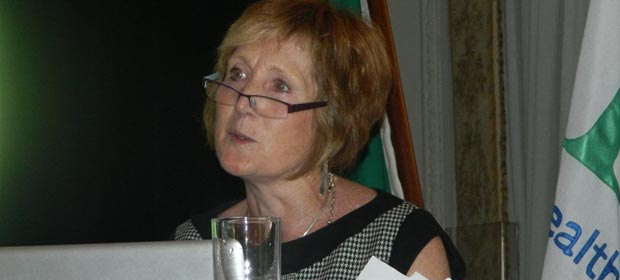Quality and change, safety, leadership, organisational culture and external influence were the five elements which made a top hospital, Sue Hodgetts, Chief Executive, Institute of Healthcare Management in the UK, told the HMI Conference.

Quality and change involved cost reduction through quality improvement, disciplined execution of change at scale and using data for improvement, not judgment.
Safety focused on getting to zero tolerance of harm and placing a deliberate focus on reducing mortality and other safety issues.
Where leadership was concerned, we needed strong stable continuity of Chief Executive Officer and a distributed leadership model, which empowered clinical leaders, empowered patients and encouraged investment in development.
Organisational culture should provide for a sense of mission and a sense of direction, mobilise the workforce with a passion to get things right for patients and define and promote values and living these values day to day.
External influence should take into account that hospitals were part of the wider community, had a corporate social responsibility, should participate in risk sharing and learning from others and be open to global comparison.
Hodgetts said that effective leaders had to deal with chaos, uncertainty, losing control and changing budgets.
In England, the NHS was now in a process of change, which involved transition into a new and enlarged bureaucracy. Under the new arrangements, GPs would commission all services and there was a requirement to save four per cent a year over the next four years.
In England, the NHS was now in a process of change, which involved transition into a new and enlarged bureaucracy. Under the new arrangements, GPs would commission all services and there was a requirement to save four per cent a year over the next four years.
This new “fairly scary” bureaucracy included GP practices, Shadow Commissioning Groups, Accredited Commissioning Groups, Clinical Networks, Oversight and Scrutiny Panels, Deaneries, PCT clusters, SHA Clusters, a Co–operation and Competition Panel, Qualified Providers (including charities, private sector and NHS providers) NHS Providers Foundation Trusts, NICE, Local Government with public health responsibility, Local arms of National Board/regional outpost, the National Quality Board, the Department of Health and the Secretary of State.
A number of existing bodies, such as the National Commissioning Board, Clinical Senates, Public Health England, Healthwatch England, Health Education England, SHAs, PCTs were being merged into these new bodies or retained as existing organisations until April 2013.
Turning to leadership, Hodgetts said that we knew surprisingly little about leadership. We knew organisations could kill leadership, but our understanding of leadership was blinkered.
The main body of research dealt with the characteristics of leadership, which has a strong psychological basis but there were no universal characteristics of leadership. What worked for one, may not for another.
There were however, three fundamental axioms of leadership. It was situational, non-hierarchical and relational.
The NHS Leadership Framework covered demonstrating personal qualities, working with others, managing services, improving services, setting direction, creating the vision and delivering the strategy.
She said reflection and learning were vital and advised managers: “Reflect on your behaviours, learn to admit it when you get things wrong, learn from your and other mistakes, learn and use the language of management and leadership and use language to influence – and be aware of its impact.

